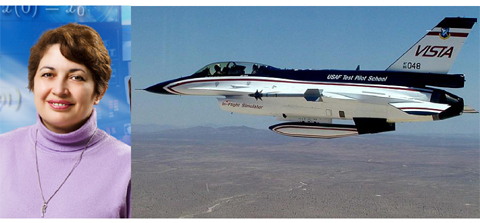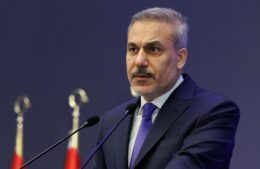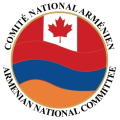U.S. Air Force to test adaptive flight control system developed by Armenian scholar
- (0)
U.S. Air Force to test adaptive flight control system developed by Armenian scholar –

After a successful flight test on Calspan’s variable-stability Learjet aircraft last year, an L1 adaptive flight control system is being modified for the U.S. Air Force’s VISTA F-16 aircraft by Professor Naira Hovakimyan and her graduate students, Kasey Ackerman and Javier Puig-Navarro. Hovakimyan, a W. Grafton and Lillian B. Wilkins Professor in MechSE, has been developing the L1 adaptive control theory since 2005, accoridng to the official website of the University of Illlinois.
The VISTA flight test, conducted by the U.S. Air Force Test Pilot School, is expected to take place in September of this year at Edwards Air Force Base in California.
The progression from testing on the Learjet to the VISTA F-16 was a natural one, said Puig-Navarro, and the next steps will be crucial. The Learjet testing itself was a huge milestone, but only certain aspects of the L1 system were tested on the Learjet aircraft. The Learjet was chosen for the first test at Edwards Air force base because it is less expensive to operate and allowed the researchers to collect over 18 hours of flight data.
“The Learjet is a slower aircraft with inherently stable dynamics, while the F-16 is more maneuverable, with faster dynamics,” Puig-Navarro explained. “The Learjet was definitely very challenging, and a necessary step on the way to the F-16. As a result, all the experience acquired from the Learjet tests was very important to move on to a faster and more dynamically challenging aircraft.”
After the September flight tests, Hovakimyan and her team hope to be one step closer to incorporating an L1 control system on more advanced aircraft, leading (in the distant future) to implementation on commercial aircraft. L1 adaptive control has the potential to make flights much safer, Ackerman said. In the event of a failure, it allows the pilot to focus on landing the airplane and getting the passengers out safely. Additionally, since the L1 system can compensate for undesirable dynamics, it may result in a more pleasant flight experience for passengers, said Puig-Navarro.
L1 adaptive control has been in development for only 10 years, and many more test flights and extended research are required before it can be considered for commercial use.
“Every new opportunity is extremely precious, and we value our relationship with Edwards Air Force Base Test Pilot School students and instructors for helping us to test our methods on a new platform every year,” said Hovakimyan. “The benefits to humanity will be safer aviation, fewer crashes, and more robust and stable flight.”
The first flight tests resulting from Hovakimyan’s research in L1 adaptive control started when NASA, Boeing, and the Air Force were researching methods for improving aviation safety from 2005 to 2010. According to Hovakimyan, previous adaptive methods for controlling aircraft under dangerous conditions needed improvements.
“It was clear that the conventional approach to adaptive control aiming for complete compensation of uncertainties, irrespective of their frequency range, achieved only asymptotic results without any quantification of the transient performance bounds, and it is during the transients resulting from unpredictable circumstances that crashes happen,” she said.
During the first tests on NASA’s AirSTAR’s Generic Transport Model remotely piloted aircraft, the L1 adaptive flight control system was the only research flight controller cleared by NASA test pilots for the unpredictable, highly uncertain stall and post-stall flight regimes, and it consistently delivered predictable performance, rendering the aircraft controllable for the pilots.
Ackerman and Puig-Navarro are looking forward to how their work will continue to unfold. The team believes that the VISTA flight tests will build upon the success of the NASA AirSTAR and Learjet projects and continue to demonstrate the efficacy of L1 adaptive control in aviation safety.
Mathematician Naira Hovakimian was born in Yerevan, Armenia. In 1988 she gratuated from the Applied Mathematics and Theoretical Mechanics Yerevan State University and did her Ph.Dat the Russian Academy of Sciences in 1992.


















